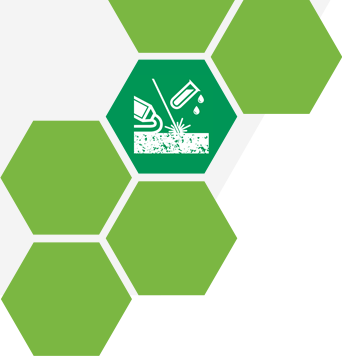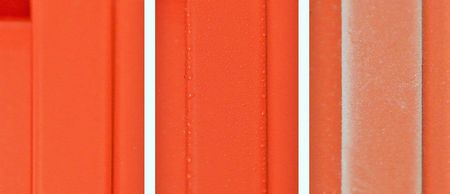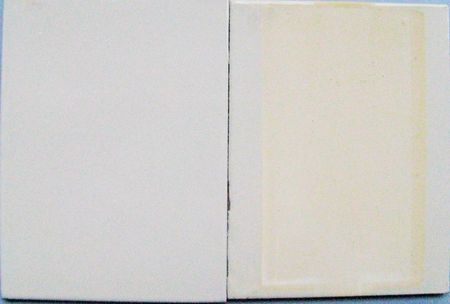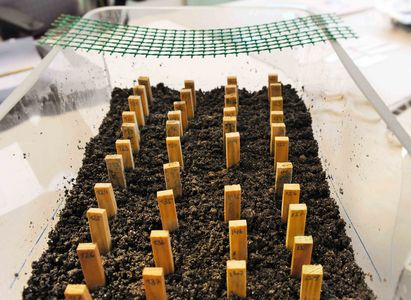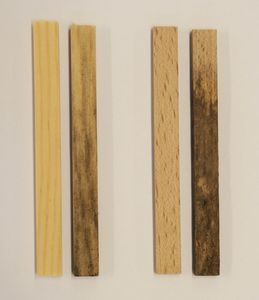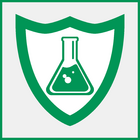Climate Resistance
Sufficient resistance to climatic influences typical for the application, such as humidity, thermal stress (heat, cold, rapid temperature changes) or UV radiation are important prerequisites for the functional suitability of composites or coatings. Testing of this climatic resistance can be carried out on the basis of generally applicable standards or regulations. If no standard tests are specified, the type and parameters of the climate resistance test are based on the planned application criteria of the respective object or on specifications in requirement specifications.
Climatic resistance is usually tested by long-term tests with defined parameter programming, usually involving a large number of cycles. INNOVENT has extensive technical capabilities to cover a wide range of different climate tests.
For climate resistance tests of products under development, composite parts, bondings, coatings, etc., various heating cabinets, climate chambers, a temperature shock chamber, a condensation water constant climate tester and combined UV exposure and weathering devices are available.
In addition to standardised test specifications, it is also possible to realise customer-specific tests within the framework of the device parameters. Furthermore, the existing testing technology is suitable for the execution of burn-in processes.
| Examples of Possible Standard Tests of Climate Resistance | |
|---|---|
| Cold up to -75°C | IEC 60 068-2-1 |
| Heat up to 300°C | IEC 60 068-2-2 |
| Humid heat | IEC 60 068-2-78 |
| Humid heat cyclical | IEC 60 068-2-30 |
| Temperature change Na - with defined transfer time in the range -75 °C to 200°C (temperature shock test) Nb - with specified rate of change in the range -75 °C to 200°C | IEC 60 068-2-14 Na, Nb MIL StD 883 D Meth. 1010.7, 1011.9 IPC-TM-650 |
| Combined test Temperature/humidity cyclic | IEC 60 068-2-38 |
| Condensation water constant climate test | DIN 50017 |
Further technical details on the individual test devices can be found in the device overview of the climate testing technology.
All outdoor components are exposed to the influence of different temperatures and humidity. Depending on the area of application (e.g. polar region, equatorial climate, subtropical desert climate), the conditions can vary greatly during the day or be relatively constant. Usually, natural changes in temperature and humidity occur comparatively slowly. Climatic test chambers are often used to simulate such environmental conditions and fluctuations. This allows both defined values as well as curves for temperature and humidity to be set. As can be seen in the figure, condensation or frost formation on the surface can also occur.
For the simulation of strong temperature changes in air (e.g. hot or cold air on cold or hot surfaces) a temperature shock chamber is provided, which allows temperature changes in less than 3 seconds.
The influence of temperature is usually noticeable as mechanical stress due to the different thermal expansion of the various materials. If these stresses become too great, damage to the material occurs. A large number of temperature changes or an increase in the rate of change leads to an increase in stress. The influence of humidity can be very versatile. For example, condensing water can penetrate into fissures and enlarge them when freezing, or the material can absorb water from the air, which can cause haze.
Materials are exposed to temperature, humidity and solar radiation in outdoor areas. The intensity of the incident solar radiation depends on the geographical location and on the installation position (direction, inclination, shading). The sun's radiation can cause damage to the material, e.g. yellowing or discoloration.
To test the influence of solar radiation, the samples are exposed directly to natural sunlight. For this purpose, the samples are ideally placed in sunny regions e.g. Florida (many hours of sunshine, high intensity) and weathered in outdoor experiments. In this manner, the necessary test time can be shortened somewhat. A much faster test is possible with our UV irradiation and weathering system. Due to the high irradiation intensity (2 suns = double intensity) the necessary irradiation time is already halved. A further acceleration results from the uninterrupted irradiation (no night phase), which does not occur in nature. Consequently, a much shorter test time is necessary for comparable test results.
The picture shows a loaded test sheet (right) after 211 h UV exposure and weathering. The contained UV exposure time of approx. 200 h corresponds to approx. 3500 h of sunshine exposure in Central Europe (reference location is Sanary Sur Mer in France - time factor of 17.5). Yellowing does not occur over the entire surface, because the outer part of the sheet is covered during the test. To verify the effects of irradiation, a reference sample is shown in the left-hand picture.
Depending on the application, wood is not only exposed to climatic stresses such as humidity, frost, UV radiation and heat, but also increasingly subject to biological degradation processes.
For this reason, complex protective arrangements are necessary when using wood outdoors under free weathering for many years of usage.
With regard to the impregnation of wood with active substances and the necessary wood protection tests, we have many years of experience. Exposure to basidiomycetes (wood fungi) according to DIN EN 113 and soft rotting corresponding to DIN V ENV 807 determine the resistance of wood test specimens. Mechanical properties are tested with compression tests (compressive strength, bending strength).

Dr. Joerg Leuthaeusser
Head of Department
Primer and Chemical Surface Treatment
e-mail
Phone: +49 3641 2825 48



